- Home
- Shop
- Living
- Blog
- MIKOLITE
- SinterTech
- About
- Gallery
- Sign in
March 21, 2024
When it comes to DIY projects, whether you're renovating your kitchen or bathroom, or simply updating your faucets, choosing the right taps can make a significant difference. Not only do taps serve a functional purpose, but they also contribute to the overall aesthetic and usability of a space. One of the key factors to consider when selecting taps for your DIY project is ease of installation. In this guide, we'll explore the essential features to look for to ensure a smooth and hassle-free installation process.

Before purchasing taps for your DIY project, it's crucial to check the compatibility with your existing plumbing setup. Taps come in various configurations, such as single-hole, three-hole, and wall-mounted designs. When looking to find your ideal taps, ensure that the taps you choose are compatible with the number of mounting holes available in your sink or countertop. Additionally, consider the spacing and dimensions to ensure a proper fit.
If you're uncertain about compatibility, consult with a plumbing professional or refer to the manufacturer's specifications for guidance. Choosing taps that are compatible with your existing plumbing will streamline the installation process and prevent the need for costly modifications later on.
The handles of your taps play a significant role in both functionality and aesthetics. When selecting taps for your DIY project, opt for handles that are easy to use and operate. Lever handles are popular for their ergonomic design, allowing for effortless control of water flow and temperature. They are especially convenient for individuals with limited hand mobility or arthritis.
Alternatively, consider taps with traditional knobs or cross handles if they complement the overall style of your space. Whichever style you choose, prioritize ease of use to enhance the user experience and make daily tasks more convenient.
Another feature to look for when choosing taps for DIY installation is the type of connection for water supply hoses. Quick-connect fittings or flexible hoses with compression or push-fit connectors are preferred for their ease of installation. These fittings eliminate the need for complex tools and soldering, making them ideal for DIY enthusiasts.
Quick-connect fittings allow you to securely attach the water supply hoses to the taps without requiring specialized plumbing skills. Ensure that the taps you select come with compatible fittings or hoses for a seamless installation process.
When selecting taps for your DIY project, one important feature to consider is adjustable installation depth. This becomes crucial when the depth of your sink or countertop varies, as it often does in different setups. Taps with adjustable installation depth offer flexibility, allowing you to customize the fit according to your specific requirements.
The benefit of adjustable installation depth is twofold. Firstly, it ensures a snug and secure fit of the taps, minimizing the risk of leaks or water damage over time. A properly fitted tap prevents water from seeping into the surrounding areas, preserving the integrity of your fixtures and surfaces.
Secondly, adjustable installation depth contributes to the overall aesthetics of your space. By customizing the fit, you can achieve a seamless and polished look that complements the design of your kitchen or bathroom. Whether your sink or countertop is shallow or deep, taps with adjustable installation depth adapt to the dimensions, resulting in a cohesive and visually pleasing appearance.
In summary, opting for taps with adjustable installation depth is a practical choice for DIY enthusiasts. It not only enhances the functionality and durability of your taps but also allows for a tailored installation that enhances the overall aesthetics of your space.
Durability and longevity are essential considerations when choosing taps for DIY projects. Opt for taps made from high-quality materials such as brass or stainless steel, which are resistant to corrosion and wear. These materials ensure that your taps maintain their functionality and appearance for years to come, reducing the need for frequent replacements.
Additionally, pay attention to the finish of the taps, as it contributes to the overall aesthetic of your space. Popular finishes include chrome, brushed nickel, and matte black, each offering a unique visual appeal. Select a finish that complements your existing decor and enhances the overall look of your kitchen or bathroom.
Clear and detailed installation instructions are crucial for ensuring a successful DIY project. When selecting taps, prioritize options that come with comprehensive installation guides or manuals. These guides should include step-by-step instructions and illustrations that cover all aspects of the installation process, from preparing the necessary tools and materials to executing the techniques required for proper installation.
A detailed installation guide not only makes the installation process easier but also helps prevent costly mistakes and potential issues down the line. It provides clarity on each step, ensuring that you follow the manufacturer's recommended procedures correctly.
However, if you encounter any confusion or uncertainty during the installation process, don't hesitate to seek additional guidance. Online resources, such as forums or video tutorials, can offer valuable insights and tips from experienced DIYers. You can also consider consulting with a professional plumber for expert advice and assistance.
By following the manufacturer's recommended installation procedures and utilizing available resources for guidance when needed, you can ensure a smooth and error-free installation of your taps. Clear instructions and proper execution not only enhance the functionality of your taps but also contribute to the overall success of your DIY project.
Warranty and customer support are critical factors to consider when choosing taps for your DIY project. A robust warranty not only provides peace of mind but also serves as a safeguard against potential defects or malfunctions. When selecting taps, prioritize options that come with a substantial warranty period covering both parts and labor. This ensures that you're protected in case of any unexpected issues during the lifespan of your taps.
In addition to warranty coverage, it's essential to evaluate the manufacturer's customer support services. Look for tap brands that offer responsive customer support through various channels such as helplines, online chat support, or email assistance. Having access to reliable customer support can be invaluable, especially when seeking guidance or troubleshooting during the installation process or addressing any concerns that may arise later on.
By considering both warranty coverage and customer support options, you can make an informed decision and choose taps from a manufacturer that prioritizes customer satisfaction and provides assistance when needed.

In conclusion, selecting taps for DIY projects involves considering several key features to ensure easy installation and optimal functionality. By prioritizing compatibility, ease of use, quality materials, and comprehensive instructions, you can successfully install taps that enhance the aesthetic and usability of your space. Remember to follow best practices and seek professional assistance when needed to achieve the best results for your DIY project.
March 11, 2024
Have you been looking for ways to enhance the aesthetic and functionality of your yard? Look no further, because we have compiled a comprehensive list of fence ideas and designs that will transform your outdoor space. A well-designed fence not only adds privacy and security but also contributes to the overall appeal of your home.
Whether you have a modern or traditional style home, a small backyard, or sprawling acres, there is something in this post that will inspire you to create the perfect fencing solution for your needs. Let's dive into this guide and explore all the possibilities for elevating your yard with stylish fences.
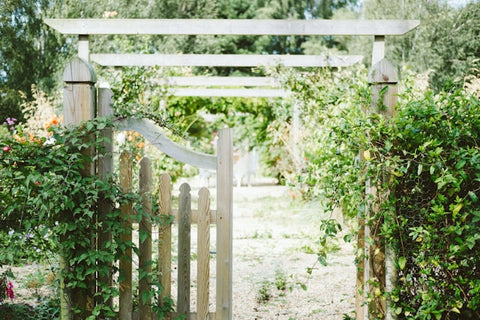
Selecting the right fence for your yard is more than just about security and privacy. It's about expressing your style, enhancing your home's exterior, and creating a welcoming atmosphere for your family and guests. With various materials, finishes, and design options available, you can find a fencing solution that complements your home’s architecture and landscape. Here, we explore some of the most popular fence types and designs to help you make an informed decision.
Wooden fences are timeless and versatile, offering a range of styles from classic picket fences to more private, tall panel fences. They can be painted or stained to match any exterior and are perfect for adding a warm, natural feel to your yard.
For those looking for a low-maintenance option, vinyl fencing is durable, resistant to weather and pests, and available in various styles and colors. Its clean lines and polished look make it ideal for modern homes.
Aluminum fences provide elegance and security without obstructing views. They are rust-resistant, making them an excellent option for areas with harsh weather conditions. Aluminum fencing works well for pool enclosures or as decorative property lines.
Wrought iron fences are known for their strength, durability, and distinctive designs. While they require more maintenance to prevent rust, they offer unmatched elegance and sophistication, perfect for historic or luxury homes.
Bamboo fencing is an eco-friendly, sustainable option that gives your yard a unique, natural look. It's excellent for creating a privacy screen or adding a tropical vibe to your garden area.
Chain link fences are a cost-effective and durable option, ideal for marking boundaries without obstructing views. While not as aesthetically pleasing as other types, they can be enhanced with vinyl coatings or privacy slats and are perfect for pet enclosures or playgrounds.
Composite fencing combines the best of wood and plastic, offering the appearance of wood with the low maintenance of vinyl. It's resistant to rot, insects, and weather, making it a long-lasting option for any yard. Composite fencing can be used in a variety of styles and colors and can suit both modern and traditional homes.

Living fences, or "green screens," made from shrubs, trees, or climbing plants, provide privacy and beauty. They require more maintenance and time to grow but offer a natural and eco-friendly barrier that can enhance the biodiversity of your yard and provide habitat for wildlife.
Before you decide on the perfect fence for your yard, there are several critical considerations to keep in mind. These factors influence not only the aesthetics and functionality of your fence but also its durability and maintenance requirements. From understanding local zoning laws to selecting the right materials, these considerations will guide you in designing a fence that meets your needs and preferences. It's always best to consult your local fence contractor for these details.
First and foremost, familiarize yourself with local zoning laws and any homeowners' association (HOA) regulations that may apply to your property. These rules can affect fence height, style, and placement, and non-compliance could result in fines or the need to modify or remove your fence.
Selecting suitable materials is crucial for ensuring the longevity and appearance of your fence. Consider factors such as weather resistance, maintenance requirements, and how the material complements your home’s exterior. Think about whether you’re looking for durability, low maintenance, or a specific aesthetic when making your choice.
Your desired level of privacy and security will significantly influence the type of fence you choose. Whether you’re looking to create a secluded backyard oasis or deter intruders, make sure the fence design and height align with your objectives.
The layout and features of your yard play a vital role in determining the best fence design. Take note of any slopes, existing landscaping elements, or areas that may need special consideration during fence installation.
Consider the future maintenance that your chosen fence material and design will require. Some materials, like vinyl and aluminum, offer low maintenance options, while wood may need regular staining or painting to maintain its appearance and durability.
While DIY fence installation might seem like a cost-effective option, hiring an expert can save you time and ensure the job is done right. Professional fence installers have the experience and tools necessary to handle unexpected challenges and can often complete the project more quickly and efficiently than a DIY approach. Contact an expert to learn more about your options and receive a personalized quote for your fencing project.
Your fence not only provides security and privacy but also adds character and charm to your home. With the wide range of materials, styles, and designs available, you can find the perfect fence that meets your needs and enhances the beauty of your yard. Remember to consider local regulations, choose suitable materials, and plan for future maintenance to ensure your fence stands the test of time.
Don't hesitate to seek expert advice and assistance in creating the perfect fence for your home. Whether you're looking for privacy and security or simply want to enhance your yard's aesthetics, there is a fencing option that will suit your needs and preferences perfectly.
March 11, 2024
In today's eco-conscious world, implementing energy-efficient outdoor lighting is more crucial than ever before. Not only does it reduce the carbon footprint and conserve energy, but it also significantly saves electricity bills.
In this article, we'll explore techniques and ideas that homeowners and businesses can adopt to illuminate their outdoor spaces in an environmentally friendly, aesthetically pleasing, and cost-effective manner. From solar-powered lights to LED options and smart lighting systems, we will guide you through the best practices for enhancing your outdoor areas while prioritizing sustainability.
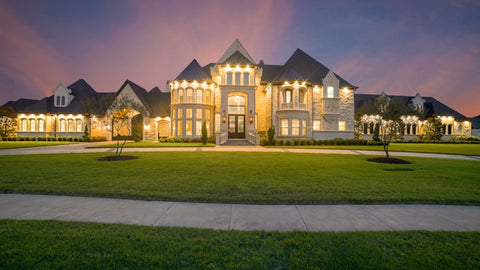
Solar-powered lights are an excellent option for installing outdoor lighting sustainably and cheaply. These lights use solar cells, also known as photovoltaic (PV) panels, to convert sunlight into electricity stored in rechargeable batteries. As the sun sets, the built-in sensors activate the lights, providing illumination throughout the night.
One of the main benefits of solar-powered lights is their ease of installation. Since they do not require wiring, they can be placed virtually anywhere in your outdoor space, making them a versatile lighting option.
They are also cost-effective as they do not rely on electricity from the grid and have minimal maintenance requirements. Solar-powered lights come in various designs, from traditional lanterns to modern stake lights, allowing you to add a personalized touch to your outdoor area.
LED (light-emitting diode) lights are another energy-efficient lighting option for outdoor spaces. Compared to traditional incandescent bulbs, LEDs consume significantly less energy, have a longer lifespan, and emit less heat. This makes them a more eco-friendly and cost-effective option.
LED lights also offer versatile design options, from string lights to spotlights, allowing you to create the desired ambiance for your outdoor area. They are also available in various colors, perfect for creating festive displays or highlighting specific outdoor space features.
Moreover, LED lights can be dimmed easily, adding an extra layer of customization and energy savings. With a longer lifespan, you also save on replacement costs, making LEDs a sustainable choice in the long run.
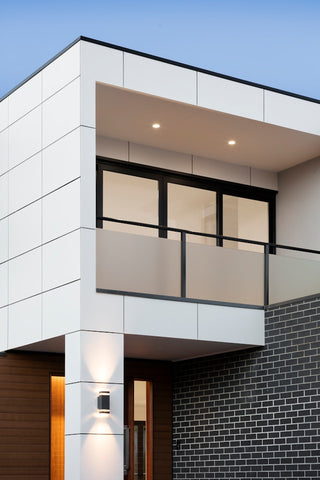
Smart lighting systems have gained popularity recently due to their convenience, efficiency, and sustainability. These systems use sensors, timers, and remote controls for optimal control over outdoor lighting. Some even come with motion sensors that activate lights only when needed, reducing energy consumption.
Additionally, smart lighting systems allow for easy customization and scheduling of outdoor lighting, giving homeowners and businesses the ability to adjust lighting levels according to their needs. Some systems even have geofencing capabilities, automatically turning off outdoor lights when no one is present or at a certain time.

Outdoor lighting serves multiple purposes, from adding aesthetic charm to practical functionality and safety.
With the variety of energy-efficient and sustainable options available, selecting the right outdoor lighting for your space requires careful consideration of factors such as energy source, durability, placement, brightness, integration with existing systems, environmental impact, and safety considerations.
By making informed choices and taking proper precautions, you can create a well-lit and environmentally friendly outdoor space that meets your specific needs and enhances the overall value of your property.
March 11, 2024
As spring turns to summer, many of us enjoy spending more time relaxing and playing outside. However, the warmer weather also makes our lawns more susceptible to foot traffic, pet activity, and other wear and tear damage. An unkempt lawn can detract from the aesthetic beauty of your home's curb appeal and lower your property value. However, with some awareness of common threats and simple preventative strategies, you can keep your grass healthy while still enjoying outdoor activities.

Today, we will explore practical tips homeowners and pet owners can use to protect their lawns from damage throughout the spring and summer months. With a little effort, your lawn can remain lush and green all season long for you and your pet to enjoy.
If you are a pet owner, then you likely know how difficult it can be to keep your lawn looking healthy and green. Dogs, in particular, can cause significant damage to lawns with their digging, running, and waste. However, there are ways to minimize the impact of our furry friends on our lawns.
The first step in protecting your lawn is to train your pet to use a designated area for their bathroom needs. This can be a specific spot in the yard or even a designated patch of gravel. Doing this lets you concentrate on cleanup efforts and prevent waste from damaging your grass.
When choosing fertilizers or pesticides for your lawn, it is essential to be mindful of the ingredients and their potential toxicity to pets. Certain chemicals commonly found in fertilizers can be harmful if ingested by our furry friends. Consider using pet-friendly options or natural alternatives to keep your lawn healthy without putting your pets at risk.
Regular mowing, watering, and aeration can significantly help reduce the impact of pet activity on your lawn. Keeping the grass short and healthy can also make it more resilient to damage from foot traffic and waste. Additionally, aerating your lawn can improve soil health and allow nutrients to reach the roots of your grass, promoting healthy growth.
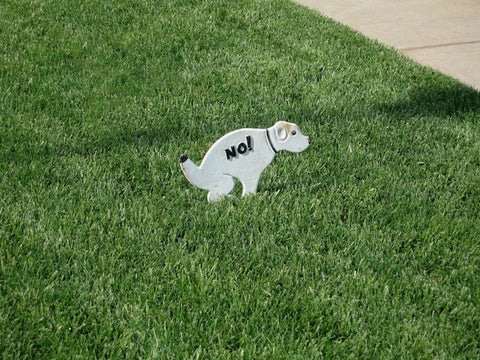
One of the most important things you can do to protect your lawn is to clean up after your pet regularly. This not only keeps your yard looking tidy, but it also prevents waste from sitting on the grass and causing damage. Dog urine can be particularly damaging to lawns, so be sure to rinse any affected areas with water immediately after spotting them.
If you have a particularly active pet that loves to run and play on the lawn, you may want to consider alternative landscaping options. Installing a designated dog run or using mulch or gravel in high-traffic areas can help minimize damage to your grass while still allowing your pet to enjoy the outdoors.
Pests and diseases can quickly wreak havoc on a healthy lawn, especially during the warmer months. Be sure to regularly check for signs of damage and treat any issues promptly to prevent them from spreading. Keep an eye out for common pests like fleas and ticks that can harm your lawn and pose a danger to your pet's health.
Incorporating natural predators into your garden, such as ladybugs for aphids or nematodes for grubs, can help maintain the balance of your ecosystem without resorting to harmful chemicals. These beneficial organisms can significantly reduce pest populations that might otherwise damage your lawn, making your outdoor space safer and more enjoyable for both you and your pet.
Overwatering or underwatering your lawn can both lead to problems, particularly in making it more susceptible to damage from pets and foot traffic. Implement an efficient watering schedule, ideally in the early morning or late evening, to reduce evaporation and ensure that your lawn gets an inch of water per week. This will keep your grassroots solid and resilient.
Applying a layer of mulch around plants and in garden beds can help prevent dogs from digging and causing damage. Mulch can also retain moisture in the soil, suppress weeds, and contribute to the aesthetic appeal of your outdoor space. Choose a pet-friendly, non-toxic mulch to ensure the safety of your pets.
If you have a particularly determined pet that enjoys digging or running through your lawn, installing fences or barriers can help prevent damage. These structures can also keep your pet safely contained in your yard while protecting your plants and grass from their playful antics.
Yes, as long as you follow the instructions carefully and keep your pets off the treated area until it has been watered in thoroughly. It is always best to opt for pet-friendly or natural alternatives when possible.
While small amounts of dog urine can actually act as a natural fertilizer, large amounts in one spot can damage your lawn. Be sure to rinse affected areas with water to dilute the urine and prevent the grass from burning.
Consider using barriers or deterrents such as chicken wire or rocks to prevent your dog from accessing the garden beds. You can also try training them with a designated digging spot or providing them with toys and activities to keep them occupied in other yard areas.
With proper care and maintenance, it is possible for pet owners to have a beautiful lawn while still allowing their furry friends to enjoy outdoor activities. By following these tips and being mindful of your pet's actions, you can minimize the impact on your lawn and get started on creating a safe and healthy environment for both your pets and plants. Remember to always choose pet-friendly options when it comes to lawn care products and regularly clean up after your pet to keep your yard looking green and lush.
March 11, 2024
Are you tired of high energy bills and drafty rooms in your home? Properly insulating and air-sealing your attic is an often overlooked but extremely important aspect of home maintenance. Many homeowners don't realize how much energy and money is wasted due to poor insulation and air leaks in their attics.
In this guide, we will discuss the importance of air-sealing your attic and the benefits of proper insulation. We will also provide you with valuable tips and tricks to ensure your attic is properly sealed and insulated. Don't let your hard-earned money go to waste—take the necessary steps to seal and insulate your attic today.
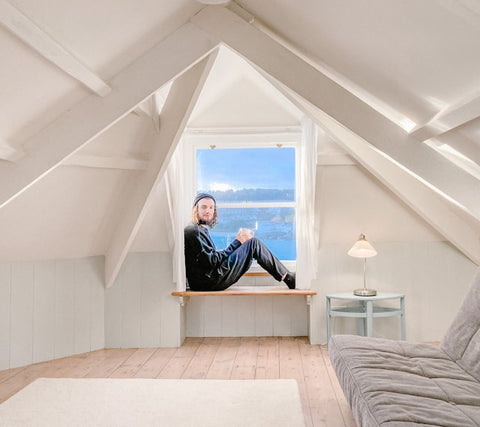
Attic air sealing is a crucial aspect of home maintenance that often gets overlooked. Properly sealing your attic can have numerous benefits, both in terms of energy efficiency and cost savings. Here are some reasons why it's important to seal your attic.
The attic is often the most poorly insulated home area, making it a prime location for air leaks. These air leaks allow outside air to enter your home and conditioned air to escape, resulting in wasted energy and higher energy bills. By properly sealing your attic, you can prevent these air leaks and improve the overall energy efficiency of your home.
In addition to the energy savings, properly sealing your attic can also lead to significant cost savings. Reducing air leaks and improving insulation in your attic can lower your energy bills and save hundreds of dollars each year. This makes it a worthwhile investment for any homeowner looking to reduce their expenses.
Poorly insulated and sealed attics can create uncomfortable living conditions in your home. Drafts, hot spots, and cold spots are all common issues that can arise from a poorly sealed attic. You can enjoy a more comfortable living space with consistent temperatures by adequately insulating and sealing your attic.
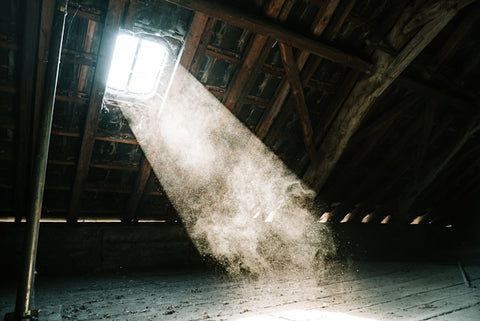
Another significant benefit of attic air sealing is the improvement of your home's indoor air quality. Unsealed attics can allow dust, pollen, and other outdoor pollutants to enter your living space, which can aggravate allergies and respiratory conditions. Sealing your attic helps to prevent these contaminants from infiltrating your home, ensuring a healthier environment for you and your family.
By sealing air leaks in your attic, you can also extend the lifespan of your Heating, Ventilation, and Air Conditioning (HVAC) systems. When your attic is sealed correctly, your HVAC system doesn't have to work as hard to maintain a consistent temperature, reducing wear and tear over time. This means fewer repairs and delays the need for potentially costly replacements, contributing to further financial savings.
When it comes to air sealing your attic, there are several considerations to be mindful of. These will help achieve the best results and ensure that the process is carried out safely and effectively. Understanding these key points before you start can make the difference between a job well done and one that needs to be redone. Below are some important considerations when sealing your attic.
The first step in effective air sealing is to identify where the leaks are occurring. Common areas include around light fixtures, electrical wires, plumbing vents, and ductwork. Using a smoke pencil or incense stick on a windy day can help reveal the less obvious air leaks by showing where air is entering or leaving your attic.
Selecting the appropriate sealant materials is critical to the success of your air sealing project. Caulk might be sufficient for small gaps and cracks, while larger spaces may require expanding foam or weatherstripping. It's essential to choose durable materials suited to the specific conditions in your attic.
Safety should always be a priority when working in your attic. Be sure to wear protective clothing, gloves, and a mask to avoid irritation from insulation fibers. Additionally, tread carefully to avoid damaging your ceiling by stepping only on the joists or using a sturdy board to distribute your weight.
While sealing leaks is crucial, pairing air sealing with proper insulation will maximize energy savings. Insulation acts as a blanket that retains heat in the winter and keeps it out in the summer. Assessing your current insulation levels and upgrading if necessary can enhance the comfort and energy efficiency of your home significantly.
Sometimes, the best move is to hire a professional to assess your attic. A professional can comprehensively evaluate your attic's current condition, identify all air leaks, and recommend the best course of action. This can be especially beneficial if you're not comfortable doing the work yourself or if the task requires specialized knowledge. If you're looking for insulation experts in your area, you can check them out here.
In the process of sealing your attic, it's also crucial not to overlook the importance of proper ventilation. While sealing air leaks prevents unwanted air exchange, adequate ventilation ensures that air flows smoothly through the attic, preventing issues such as moisture buildup and mold growth. It's essential to balance sealing and ventilation to maintain a healthy attic environment.
Before proceeding with any sealing efforts, inspect your attic for any signs of wildlife entry. Holes and cracks not only serve as pathways for air leakage but can also invite squirrels, rodents, and other pests into your attic. Sealing these entry points can prevent wildlife infestations, which could lead to damage and require costly repairs.
When air-sealing your attic, consider the opportunity to update or repair any outdated electrical wiring or fixtures. This is especially important if you're sealing around these areas to reduce air leakage. Modern, energy-efficient lighting options, like LED bulbs, can also be installed during this process, further enhancing your home's energy efficiency.
Ensure that all work performed in your attic, especially related to air sealing and insulation, complies with local building codes. These codes are in place to ensure safety and energy efficiency standards are met. Non-compliance can lead to penalties and may impact your home's resale value or insurance coverage.
Air sealing your attic is a wise investment that can bring significant benefits. The advantages are numerous, from improved comfort and indoor air quality to energy savings and increased HVAC longevity. However, it's crucial to understand the process and its considerations before undertaking the task to ensure optimal results. Whether you decide to tackle the project yourself or hire a professional, proper air sealing of your attic is a crucial step towards achieving a healthier, more energy-efficient home.
March 11, 2024
Glass railings are popular for modern homes due to their sleek and elegant design. They provide an unobstructed view, allow natural light to flow through, and can make a small space appear larger.
However, like any other home improvement project, glass railings have pros and cons that should be considered before making a decision. In this article, we will discuss the different types of glass railings, their pros and cons, and how they can be a great addition to your home.

Various kinds of glass railings can be found in the market, each with distinct features and advantages. Here are some of the most common types of glass railings for your home:
Frameless glass railings are made of thick tempered glass panels fixed to the floor or side-mounted to a staircase without any visible posts or frames. They provide an unobstructed view and give a modern and minimalist look to your home.
Semi-frameless glass railings have minimal metal frames around the edges of the glass panels, giving them a sleek and modern look. They are less expensive than frameless glass railings but still provide an unobstructed view.
Framed glass railings have visible metal frames holding the glass panels. They are more affordable than frameless and semi-frameless glass railings, but they do not provide an unobstructed view.
Topless glass railings have no top railing or handrail, giving them a clean and modern look. They are often used for balconies, decks, and terraces to enhance the view without compromising safety.
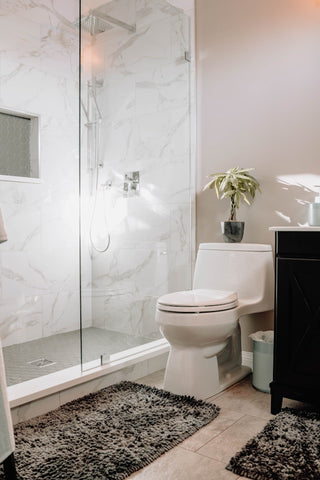
Glass railings offer many benefits, making them a popular choice for modern homes. Here are some of the pros of installing glass railings in your home:
The main reason for choosing glass railings is their aesthetic appeal. Their sleek and transparent design can give any space a modern, elegant, and open feel.
Glass railings provide an unobstructed view, allowing natural light to flow through and making a small space appear larger.
Glass railings are easy to maintain and clean. Wipe them down with a glass cleaner, and they will look as good as new.
Tempered glass used in railings is strong and durable, making it a safe option for your home. It can withstand extreme weather conditions and does not rust or corrode like metal railings.
While glass railings offer many benefits, some cons should be considered before installing them in your home:
Glass railings can be expensive, especially for frameless or topless designs. They also require professional installation, which adds to the cost.
Glass railings offer little to no privacy compared to other types of railings. If privacy is a concern, then there may be better options for your home than glass railings.
Glass railings tend to show fingerprints and smudges easily, meaning they require regular cleaning to maintain their elegant appearance.
While tempered glass used in glass railings is strong and safe, accidents can still occur if not installed correctly or if the glass panels are not maintained properly.
Glass railings are popular for homeowners looking to add a modern and elegant touch to their homes. They offer many benefits, including unobstructed views, durability, and easy maintenance. However, they also come with some cons to consider before deciding.
By understanding the different types of glass railings, their pros and cons, and additional factors to consider, you can decide whether they are the right choice for your home.
Always follow local building codes and regulations and hire professionals for proper installation to ensure safety and compliance.
March 11, 2024
Selecting the right window treatments is crucial when designing and decorating your home. Not only do they play a functional role in providing privacy and controlling light, but they also add personality and style to any space. With so many materials available on the market, finding the perfect window treatment for your home can be overwhelming.
From traditional fabrics like cotton and silk to modern options such as vinyl or bamboo, each material has unique qualities that make it suitable for different rooms and settings. In this blog post, we'll compare some of the most popular window treatment materials, their characteristics, benefits, and drawbacks to help you determine which one is best suited for your home.
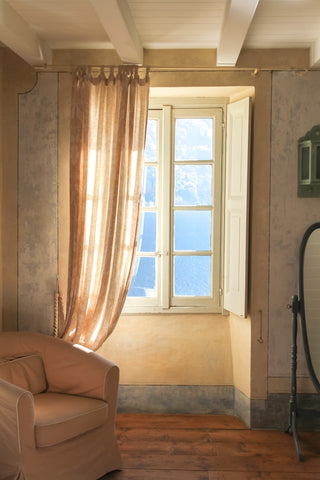
Choosing the suitable material can transform the look and feel of your room, enhancing its aesthetics while serving practical needs. Whether you're aiming for a light and airy vibe or a more insulated and private atmosphere, the material of your window treatments will play a key role. Below, we explore some of the most sought-after materials, outlining their features and the types of window treatments available in each to guide you in making an informed decision.
Cotton is a versatile and popular choice for window treatments, and it is known for its durability and ease of maintenance. It offers a clean, crisp look that suits various decorating styles, from modern to traditional. Cotton is excellent for allowing natural light into a space while providing enough privacy.
Silk adds a touch of elegance and luxury to any space. It's a natural fiber known for its shimmering appearance and has excellent draping qualities. While silk is more delicate and may require professional cleaning, its beauty and timeless appeal make it a favorite for formal areas.
Vinyl is a practical and cost-effective window treatment material, offering durability, easy maintenance, and versatility. It's available in a range of styles and patterns, making it suitable for any room in the house.
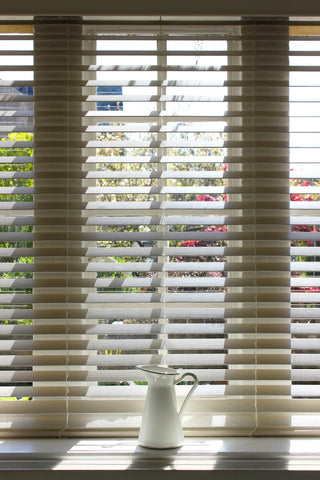
Bamboo is an eco-friendly material that adds warmth and a natural aesthetic to a room. It's perfect for creating a relaxed, organic feel and offers varying degrees of light filtration and privacy, depending on the weave. Bamboo treatments are durable and can complement both modern and traditional decors.
Linen is renowned for its natural, elegant texture and exceptional breathability, making it an ideal choice for a relaxed yet sophisticated aesthetic. This material is perfect for creating a light and airy atmosphere in any room, offering a moderate level of privacy while allowing soft, diffused light to enter.
Polyester is a highly durable, affordable, and versatile fabric choice for window treatments. It's resistant to fading and wrinkling, making it an excellent option for high-traffic areas or rooms exposed to a lot of sunlight.
Velvet is a luxurious material that adds depth and richness to any interior. Known for its softness and deep pile, velvet window treatments can transform a room into a sumptuous sanctuary.
No matter your style or budget, there is a window treatment material that will suit your needs. From the natural elegance of cotton and linen to the luxurious appeal of silk and velvet, each material offers its unique benefits and can add character and personality to any room. Consider mixing different materials for a layered look or opting for one material throughout your home for a cohesive aesthetic. With so many options available, you can truly customize your window treatments to reflect your personal style. Also, you can always contact a window treatment expert to see more options.
March 04, 2024
Decorating your home with vintage elements is one of the best ways to add more character to your place and ensure that it reflects your personality. Moreover, vintage pieces come with their own stories, allowing you to create a unique style and bring an authentic charm to what otherwise would have been a contemporary house.
Fortunately, there are countless ways to incorporate vintage home decor ideas into the interior and achieve that nostalgic vibe. You can start with something as simple as adding antique lighting fixtures or embracing vintage textiles in the form of cushions and lampshades. Then, you may move to more significant home improvements, such as installing roof windows or exposing ceiling beams for a more rustic look.

Keep reading and choose something that best suits your home's overall appearance!
One of the quickest and most effective ways to give your home a vintage makeover is to incorporate some antique lighting fixtures. You can start small by opting for vintage-inspired wall sconces or table lamps or choose more dramatic pieces such as chandeliers and floor lamps to make them the room's focal point.
There are many ways to find antique lighting fixtures, but the easiest is to check out online marketplaces and local flea markets. You can also look for second-hand stores in your area that specialize in selling vintage items.
If you want to let more natural light into your home, one of the best solutions is to install flat roof windows. It is a relatively cost-effective home improvement project that can completely transform your house, making it look more spacious, open, and bright.
After opening flat roof windows, your interiors will look more welcoming. Plus, it will help you circulate the air and make your home cooler even during the most scorching summer days. Because of that, flat roof windows are perfect for homes in hot climates. Just make sure to install them properly to avoid any water leakage.
If you want a more rustic look in your home, opting for exposed beams is one of the best ideas. These come in various shapes, sizes, and designs, allowing you to choose the one that best complements your interior.

By installing beams in a room, you will instantly achieve an antique look, regardless of the rest of the furniture and décor. Moreover, they add a rustic touch, making the entire space appear cozier and more welcoming. Consequently, finishing this project will make spending time between your four walls much more special.
If you are unsure how to incorporate these beams into your home, look at some inspirations online on websites like Pinterest or pages explicitly dedicated to home interiors. You also should not shy away from professional interior designers and ask them for advice whenever in doubt.
Although textiles are often overlooked when it comes to home decor, they can bring a lot of character to a room. There are many ways to incorporate them into your interior, but some of the most popular include using them as cushions, throws, or even tablecloths.
The key here is to choose vintage fabrics that are high-quality and in good condition. It is a good idea to give them your personal touch by adding some embroidery or text.
Vintage textiles are perfect for adding more style and texture to the walls as well. For example, you can hang some old curtains or tablecloths near the windows for added privacy and visual appeal.
Alternatively, you could use vintage fabric for upholstery. That way, your sofas and chairs will also acquire that unique character that comes with vintage pieces.
You can find vintage textiles at local flea markets, online marketplaces, or even second-hand stores.
A mirror on the wall can add more space to a room and create an illusion of light and brightness. Vintage mirrors are usually more colorful than contemporary ones, making them ideal for adding a brighter element to your home's decor. They come in all shapes and sizes, so you're sure to find one that fits perfectly in the space you have available.
The best thing about vintage mirrors is that you do not have to break the bank to get them. If you want something unique, try to look for one that features intricate details and motifs — it will make your home even more interesting!
If you wish to create a vintage feel in your home, the best thing you can do is incorporate vintage furniture into your decor. The idea of vintage furniture is actually somewhat subjective, so you can consider most furniture made years ago as vintage.
Antique furniture is definitely a great choice if you want to work with vintage elements. Still, second-hand items and 'imperfect' pieces are also perfectly viable solutions for creating a more casual look. For instance, you can search for vintage sofas on sites like Gumtree or eBay or check out garage sales and flea markets to find something that fits your house.
If you do not have enough space for an old sofa, try to find ready-made furniture that you can easily incorporate into your interior. Investing in vintage furniture can be expensive, but looking through online marketplaces and thrift shops is always a viable option to find something unique and budget-friendly.
An easy and affordable way to achieve a vintage vibe in your home is to use wallpaper that features a vintage-inspired pattern. You can check out some of the most trendy motifs online, including floral patterns and florals, damask patterns, or animal prints. You can even find wallpaper with old-fashioned maps or newspaper designs.
If you aim for a more personal approach, you may find a unique wallpaper pattern on the Internet and print it out yourself. Of course, the outcome may not be perfect, but it will be original and full of character.
Fortunately, wallpaper is relatively easy to apply, so this is an excellent project for anyone who wants to add a personal touch to their home. Just make sure to choose a pattern that goes well with your house's overall style and colour scheme.
Vintage home decor ideas are ideal for creating a more welcoming and intimate atmosphere in your house. Besides, vintage elements are a great way to reflect your personality and give your home a unique edge.
If you have decided to go with a vintage-inspired interior, you can choose from the above ideas and apply them to your home in a way that will complement it and make it look as if it has existed for decades.
The nice thing is that you do not have to go all at once. Instead, you could try one thing at a time and see how things turn out. And, of course, feel free to play around with different nuances and experiment with the direction you want your home to take.
March 02, 2024
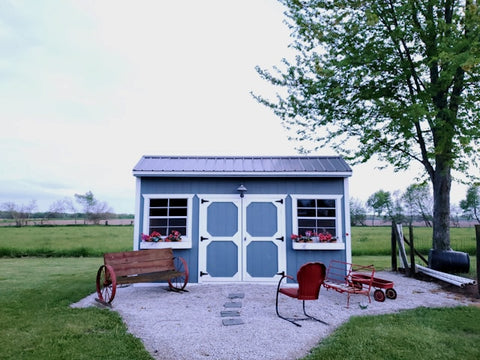
Tiny homes are becoming increasingly popular and for good reason. These compact living spaces offer a simpler, more sustainable lifestyle that allows individuals to declutter their homes and focus on what truly matters. Minimalism is a key aspect of tiny home living, promoting the idea of owning only what you need and eliminating excess possessions. Embracing minimalism in your tiny home can bring numerous benefits, from saving money on living expenses to reducing your carbon footprint.
In this blog post, we will explore the reasons why you should consider embracing minimalism in tiny homes and how it can positively impact your life. Let's get started.
One of the major reasons to embrace minimalism in tiny homes is its cost-effectiveness. With a smaller living space, there is less need for expensive furniture, decor, and household items. Tiny homes also require less energy to heat and cool, resulting in lower utility bills.
Additionally, by owning fewer possessions, you can save money on storage costs and avoid impulse purchases. Minimalist living also encourages intentional spending, where you only purchase items that truly add value to your life. This can lead to significant savings in the long run and allow you to allocate funds towards experiences or investments rather than material possessions.
Another advantage of embracing minimalism in tiny homes is the mobility it offers. You can find tiny homes on wheels, allowing you to easily move your home to different locations without the hassle of packing and unpacking. This flexibility can be beneficial for those who enjoy traveling or want the freedom to relocate without being tied down by a traditional house.
Additionally, tiny homes take up less space on the road, making it easier to navigate through narrow roads and reduce travel costs. With minimal possessions, moving homes becomes a simpler and more cost-effective process. Overall, minimalism in tiny homes provides the opportunity for a more mobile lifestyle.
Minimalist living promotes sustainability, which is another compelling reason to embrace it in tiny homes. With less space and fewer possessions, there is less waste produced, leading to a smaller environmental footprint. Many tiny homes also incorporate eco-friendly features, such as solar panels and composting toilets, reducing reliance on traditional energy sources and minimizing the impact on the environment.
Moreover, living a simpler lifestyle in a tiny home encourages individuals to consume less and be more mindful of their environmental impact. For instance, instead of buying new items, a minimalist may choose to repurpose or borrow from others, reducing the demand for new products and ultimately decreasing their carbon footprint. By choosing to live with less, you are making a positive contribution towards creating a more sustainable world.
One of the fundamental principles of minimalism is decluttering, and tiny homes offer the perfect opportunity to do so. With limited space, individuals are forced to evaluate their possessions and keep only what they truly need and value. This can lead to a sense of freedom from material possessions and reduce the stress and burden of maintaining a large home.
Furthermore, decluttering can have a positive impact on mental health, promoting a sense of calm and clarity. A good example is the popular KonMari method, which encourages individuals to only keep items that spark joy in their lives. In a tiny home, every item has a purpose and place, making it easier to maintain a clutter-free living space.
Minimalism in tiny homes also encourages individuals to focus on experiences over possessions. With less space for material items, there is more room and opportunity to create meaningful experiences and memories. This can include spending time outdoors, traveling, or pursuing hobbies and passions.
Moreover, by limiting the number of possessions we own, we are forced to be more intentional with our purchases and only choose items that align with our values and bring true joy. As a result, individuals can find more fulfillment in their experiences rather than constantly chasing material possessions.
Living in a tiny home means less cleaning and maintenance compared to traditional homes. With fewer rooms and possessions, there is less surface area to clean and organize. This can save valuable time and energy, allowing individuals to focus on other aspects of their lives.
Additionally, with a smaller living space, there is less need for constant repairs or renovations, resulting in lower maintenance costs. This can also lead to a more sustainable lifestyle by reducing the use of resources and materials. Overall, minimalism in tiny homes promotes a simpler and more manageable living space.
Embracing minimalism in tiny homes can have a positive impact on the environment. By living with less, individuals are reducing their carbon footprint and minimizing waste production. This is beneficial for the planet and can contribute towards creating a more sustainable future.
Moreover, many tiny homes incorporate eco-friendly features such as rainwater harvesting systems and solar panels, further reducing their environmental impact. By choosing to live in a tiny home, individuals are making a conscious effort to live more sustainably and help preserve the planet for future generations.
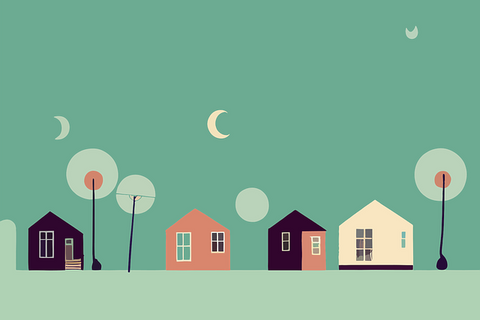
Lastly, minimalism in tiny homes promotes mindfulness by encouraging individuals to be intentional with their possessions and lifestyle choices. With limited space, individuals are forced to evaluate their priorities and only keep what truly serves a purpose in their lives. This can lead to a more mindful and intentional way of living, where individuals focus on quality over quantity.
Moreover, living in a tiny home requires individuals to be present and appreciate the simple joys in life, rather than constantly chasing material possessions. By embracing minimalism in tiny homes, individuals can find more fulfillment and purpose in their daily lives.
There are numerous reasons to embrace minimalism in tiny homes, ranging from cost-effectiveness and sustainability to promoting mindfulness and decluttering. Whether you are looking for a simpler lifestyle or want to make a positive impact on the planet, minimalism in tiny homes offers many benefits that are worth considering. So, if you are ready to declutter your life and embrace a more intentional way of living, consider making the switch to a tiny home. The possibilities and benefits are endless.
January 19, 2024

Home is more than just a place; it's a sanctuary where we seek refuge from the outside world. Creating a home that prioritizes both privacy and comfort is essential for our well-being. In this guide, we'll explore practical tips and solutions to transform your living space into a private and comfortable haven.
Elevating the privacy of your home begins with thoughtful window treatments. Choosing the right curtains, blinds, or shades not only enhances the aesthetic appeal of your space but also adds a layer of seclusion. Opting for blackout curtains in bedrooms and selecting window coverings that align with your decor can significantly increase your home’s privacy. Roller blinds also add privacy to your home while adding other benefits. You may also choose to use blinds in any room or space where you have skylights or large windows that allow significant sunlight to enter, as they offer similar benefits of light control, temperature regulation, and privacy. These choices control natural light and create a sense of intimacy within your living spaces. By carefully selecting and installing window treatments, you can effortlessly add privacy to your home while imbuing it with style and functionality. Explore a variety of options to find the perfect window treatments that complement your interior design and contribute to the overall coziness of your private haven..
Landscaping serves as a transformative tool for enhancing the privacy of your home and creating an outdoor sanctuary. Strategic placement of trees, shrubs, and plants can act as natural barriers, shielding your living spaces from prying eyes and creating a tranquil environment. Tall and dense foliage not only adds privacy but also contributes to the aesthetics of your outdoor space. The beauty of landscaping lies in its ability to seamlessly blend nature with your home, offering a harmonious retreat where you can relax and enjoy the serenity of your surroundings. Whether it's establishing a green perimeter or incorporating potted plants on your patio, landscaping provides a customizable solution to enhance both the privacy and visual appeal of your home exterior.
In the age of smart living, technology offers innovative solutions for privacy control. Embracing smart home technology is a modern and effective approach to bolstering the privacy and security of your living space. Integrating devices such as smart doorbells, cameras, and automated blinds allows you to control and monitor your home remotely. This not only adds a layer of convenience but also enhances your ability to safeguard your privacy, especially when away from home. Smart home technology enables you to manage access points, surveillance, and even lighting with the touch of a button on your smartphone. Investing in these innovative solutions contributes not only to the efficiency of your daily routines but also to the overall peace of mind that your home remains a private and secure haven. Explore the array of smart home options available to tailor your privacy control according to your preferences and lifestyle.
Selecting the right furniture and arranging it thoughtfully can significantly impact the comfort and functionality of your living spaces. Opt for pieces that prioritize both style and comfort, creating an inviting atmosphere. Consider the layout of your rooms to maximize space and flow, allowing for easy navigation and a sense of openness. Strategic placement of furniture, such as creating cozy conversation areas, fosters social interaction and contributes to the overall comfort of your home. Thoughtful furniture selection and arrangement play a crucial role in shaping the ambiance of each room, transforming your living space into a comfortable and welcoming haven tailored to your lifestyle and preferences.
Lighting is a key element that can set the tone for your home, influencing both its aesthetics and comfort. A well-thought-out lighting scheme involves a combination of natural and artificial light sources to create a warm and inviting atmosphere. Strategically placed overhead fixtures, floor lamps, and table lamps can be used to achieve a layered lighting effect, providing versatility for different moods and occasions. Dimmer switches add an extra level of control, allowing you to adjust the lighting intensity according to your preferences. By paying attention to lighting details, you can enhance the overall comfort of your living spaces, making them more inviting and visually appealing. Consider exploring various lighting options to find the perfect balance that complements your home's style and contributes to a cozy ambiance.
Maintaining a comfortable temperature is a fundamental aspect of creating a cozy and welcoming home environment. Ensuring that your heating and cooling systems are in good condition is essential for year-round comfort. Smart thermostats provide efficient temperature control, allowing you to customize settings based on your preferences and schedule. Additionally, during colder seasons, incorporating cozy blankets, rugs, and throws can add warmth and contribute to the overall comfort of your living spaces. By carefully managing temperature and incorporating both functional and aesthetic elements, you can create a home that is not only inviting but also tailored to your ideal level of comfort.
Adding personal touches to your home is the final layer that transforms it into a truly private and comfortable sanctuary. Adorn your space with meaningful objects like family photographs, artwork, or cherished keepsakes. Incorporating your unique style and personality into the decor makes your living spaces feel distinctly yours. Whether it's customizing a reading nook with your favorite books or displaying travel souvenirs, these personal touches contribute to the warmth and character of your home. Don't be afraid to experiment with colors, textures, and patterns that resonate with your individual taste, creating an environment that reflects your personality and elevates the overall coziness of your private retreat.
The hues we encounter significantly influence our emotions and overall sense of well-being.Choosing the right color palette can influence mood and emotions, contributing to the overall comfort of your living spaces. Earth-toned browns and gentle yellows can establish a warm and welcoming ambiance, while cool blues and greens evoke a feeling of calmness. Consider the function of each room and select colors that align with its purpose. Additionally, incorporating neutral tones as a base can provide versatility for accessorizing and adapting the decor over time. By understanding the psychological impact of colors, you can create a harmonious and visually pleasing environment that enhances the comfort and privacy of your home.

In conclusion, achieving a perfect balance between privacy and comfort is a personalized journey. By implementing the tips outlined above, you can transform your home into a haven that not only protects your privacy but also nurtures your well-being. Take the time to assess your needs, incorporate personal elements, and embrace the beauty of a home that reflects your unique style and provides the comfort you deserve. Your private sanctuary awaits, ready to embrace you in warmth and tranquility.
December 20, 2023
Creating a safe space at home is not only about the furniture, mats, or innovative tech-powered alarm systems. With the choice of your flooring materials alone, you will already provide 70% of the safety your homes need.
For that reason, epoxy floors are gaining more acceptance and finding a place inside residential areas. The safety it creates on the flooring spaces is not a secret, making floors easy to clean and not easily broken by forceful impacts.
But before you use epoxy inside homes, you must first be aware that it has its cons amidst its pros.

Epoxy is not used anymore for industrial spaces alone. Now, many home rooms and areas use epoxy for its beyond-concrete benefits.
With epoxy, a home will be durable, safe to walk on the floor, clean at all times, and worry-free maintenance because epoxy is super resistant and can withstand any elements.
When you think of advantages, your list will go on and on. Furthermore, the areas where you can install epoxy coatings will take a long time, like scroll training on the floor surface.
However, don’t be blinded by these, for there are also disadvantages that come with having epoxy in your homes.
Discover the potential drawbacks of utilizing epoxy for home flooring as we guide you through key considerations essential for your flooring improvement plans. To navigate these challenges effectively, entrusting the installation of any home floor coatings to specialists like those at Residential Flooring San Jose is the optimal solution. For a deeper understanding of proper maintenance and usage of epoxy, explore more details about epoxy-enhanced floors through online resources from experts.
Curious about the potential pitfalls? The forthcoming discussion will provide insights into what could go wrong, offering valuable information to address and overcome potential challenges in your flooring project.

Installing Epoxy at home can be harmful.
While the benefits of a lasting floor coating are enticing, the installation process itself can raise concerns.
Do you have young children, pets, or older adults in your household? If your response is a resounding "yes" to all, then epoxy might pose significant drawbacks for your home.
However, does this imply a complete exclusion of epoxy from your home? In addressing this question, especially when prioritizing your family's safety, it is crucial to heed the advice of professionals.
The installation of epoxy floor coatings at home becomes secure when handled by specialists. The experts at Residential Floor Dallas consistently recommend reaching out to licensed decorative floor resurfacing contractors for insights when considering enhancing home floors with epoxy.
Dealing with potentially hazardous materials necessitates expertise. Local contractors elucidate why the installation of risky floor coatings is unsuitable for home and DIY applications.
Read through to the end for valuable tips on managing floor coating materials prone to hazards. Your family's safety is paramount, and informed decisions guided by professionals ensure a secure and aesthetically pleasing home environment.
Uncontrollable time for curing
Be careful when using epoxy, for its time of curing isn’t easily controllable. It dries so fast on a concrete surface.
And since it's resin, the compound hardens like a rock. Imagine accidentally dropping some of it onto your skin. That is frightening because the resin-like epoxy coating will temporarily stick to the surface.
So it can be seriously harmful to use. But that will only be true for professionals in epoxy installation. Avoid epoxy if you want to avoid accidents of getting contact with it. However, the better choice would be to ask a professional installer to process it in your home.
Costly Investment for short-term use
Epoxy coating is often a disadvantage because of how much it costs. Those who had already used epoxy for their properties would know that the material would cost less than other durable materials. However, the fees would double when you add professional and labor expenses, plus the design and pre- and post-construction costs.
Most would prefer to invite professional installers, and the cost of using epoxy for home improvement is where the heavy amount comes in.
So, if you are only going to live at your residential property for a few years, which will be at most five, investing in epoxy flooring can be a disadvantage.
Epoxy resin has fumes that are harmful when inhaled.

Depending on the temperature in your spaces and the amount of humidity, these factors will affect how the fumes can be harmful.
If your spaces have tiny ventilation and are pretty low in humidity, the fumes will take long hours to dissipate.
So, if you live in a space where you apply resin coatings, you are at risk of inhaling the fumes. Even though there is no strong-smelling scent from the coating, the materials that can be released from epoxy and mixed in the air are the ones to avoid.
Takeaways
You must familiarize yourself with the pros and drawbacks of using epoxy floors at home. Epoxy is quite a very accessible product that anyone can use, especially if they want to use it for DIY home makeover projects.
Considering these drawbacks, exercising caution is paramount when opting for epoxy at home. It's crucial to bear in mind that professional installers can provide valuable assistance. If your interest in using epoxy is high, the recommended approach is to engage a hired contractor and construction experts. Additionally, exploring alternative materials like natural stones, sintered stone, or wood floors is a prudent consideration. Above all, prioritize finding a material that aligns with your desires and meets your specific needs.
December 12, 2023
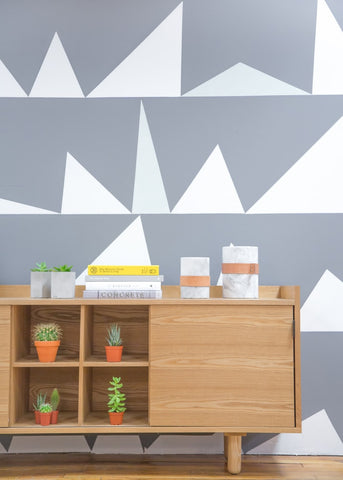
Learning the basic design is essential for an Interior Decorator. The principle models that are involved behind the décor need a watchful eye. The question event to have a more providing with an unusual
An interior decorator does not have that proper training and emphases on the aesthetics and the exterior presence. Who you would employ hinges on whether you have any construction work or planning you need to finish. If it is indeed planning, then you will need someone who has the experience to deal with visual decoration and functionally reliable renovations.
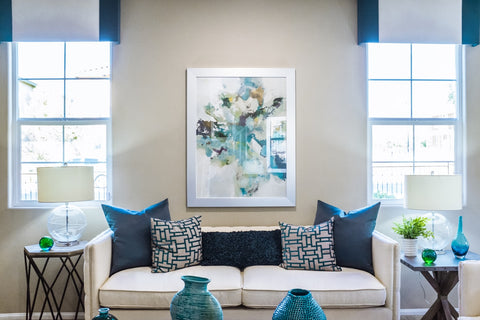
Your first phase is to select a particular style for the home interior. It will promote the unity of design and allow you to synchronize all the décor. Although it is not necessary, yet having the same theme for the whole house sounds more logical. It is the simple matter of choosing casual, formal or mix look.
You can refine the design after you have made the final selection as nothing is absolute in interior décor. Many times you can make significant changes during the later stage. There are many modern design trends that can be referenced for ideas.
The other primary principle is achieving a perfect balance in the room. Any particular area should not draw your attention away from the room. Every part should match and introduce a new flavor at the same time. The exception is the focal points which are found in each room. It can be a fireplace in a living room or a table in the dining room.
The rhythm of the room has to be dynamic, so you have to keep in mind the various changes you will make.

Instead of choosing bold primary colors, select soothing colors and calming black-and-white tones. The gentle hues of blue, yellow, and green are considered serene. Vibrant toned hues set the mood of relaxation and ease. These might contain grey, brown, and red. Use toned-down varieties of your chosen colors in the bedroom. It might mean picking a soft color instead of ones like dark purple, dark tan, and Charcoal Grey.
The ceiling is also an essential part of the room. When you are lying in bed, you see a white dull-colored exterior. Add a delicate outline or soft tint. Decorate the ceiling in a somewhat brighter version of the walls hue. It will help in seemingly lowering the roof and giving the space a sensation of coziness and familiarity.
Other explanation would be cutout or wallpaper on the ceiling. Add architectural fundamentals in the form of support beams or ceiling rose. You can also add decorative paint to it. For ultimate luxury, silver or gold color bedroom ceilings, a canopy or hammock with a translucent paper that hangs. The ceiling can envelop you in warmth while adding texture, and design will further enhance the effect. Add a molded false ceiling and chandelier of precious stone or faint shades that bring out color, shape, and smoothness to the wall above you.

A room should look convenient and straightforward, on one side, while classy, and tasteful, irrespective of what grace of beautifying you select. For ease of movement, leave at least some space between the chair and sidewalls. You also have to expand the area between large pieces of furniture and other items which can be found in the room.
If you are walking between all the things such as bed, table sofa, and coffee table, then you need space. Supply your sleeping quarters with only what you require. A bed, a bedside table, chair, and a dresser, are essentials. Anything else is useless. If you have room, place a trunk or drawers in the storage. Read more about the most comfortable couches and chairs to put in your living room. Make sure to have a desk and an ergonomic chair in your home office, as well. Keep the design minimalistic and functional.
Equipment should be retained to a minimum. Decide on an eye-catching piece of painting, add floras, some family snapshots, and other trinkets, and then watch the magic happen.

When you are ready to buy furniture of any sort, start with a completer floor plan. Take all the measurements so that you may know everything precisely. Furniture should fit snuggly in the room. It is chiefly true for bedroom furniture. Do not select an enormous bed and dresser for your bedroom, when the dimensions of the room are small. If the ceiling is high, a tall cupboard will help to reduce the height visually.
If your room is large, choose stuff that fits well into it. You can add a chair, carpet and an ottoman to cut in any additional space. Furniture and decorations that are small in size will also draw attention and look out of place.
To further add to the refreshing sensation of room decor, place the extra items in the store. The room will automatically appear more calm and roomy.
Choose a large bedside table with plenty of drawers. You can put in books, glasses, medicine, and other miscellaneous items. If you want additional storage, then choose small containers or bags that you can hide behind chairs and sofas. In a bedroom or kitchen you can use a trunk or cabinet to away the extra stuff. Place small boxes underneath the bed, hiding them with a gorgeous cloth.
The things you may need to keep near ca rest in the sliding panels and tables beside you. An excellent organization method can make the full use of cupboard space.
You have to keep in mind that there should be a particular corner just for you. You can sit back and relax here, read a book or watch a show. Place a sofa or a comfortable chair with a footstool to rest your feet.
If you have a large window then you can make your corner near it. The window will provide you with plenty of light and a view of the outside.
Decorating a home requires a thorough knowledge of the design, colors, and the latest trends. Gone are the days when people use to do interior décor by intuition alone. Nowadays, it has become an art form that very few can master.
However, with little training and experience, anything is possible. You can create a modern interior décor by applying the techniques mentioned here.
Guest post by: Sophie E
